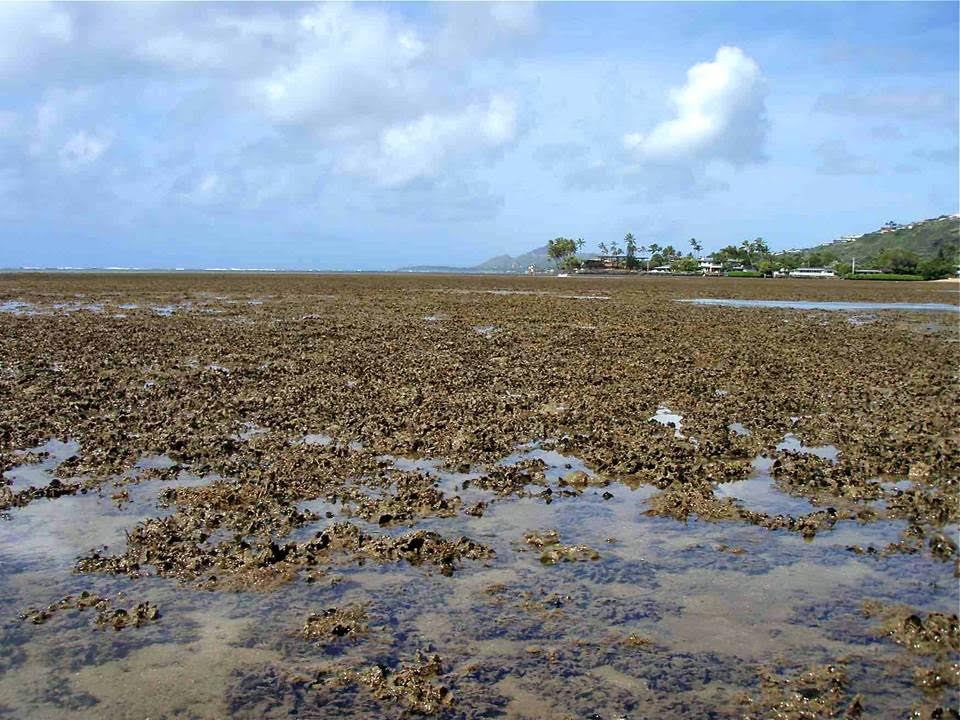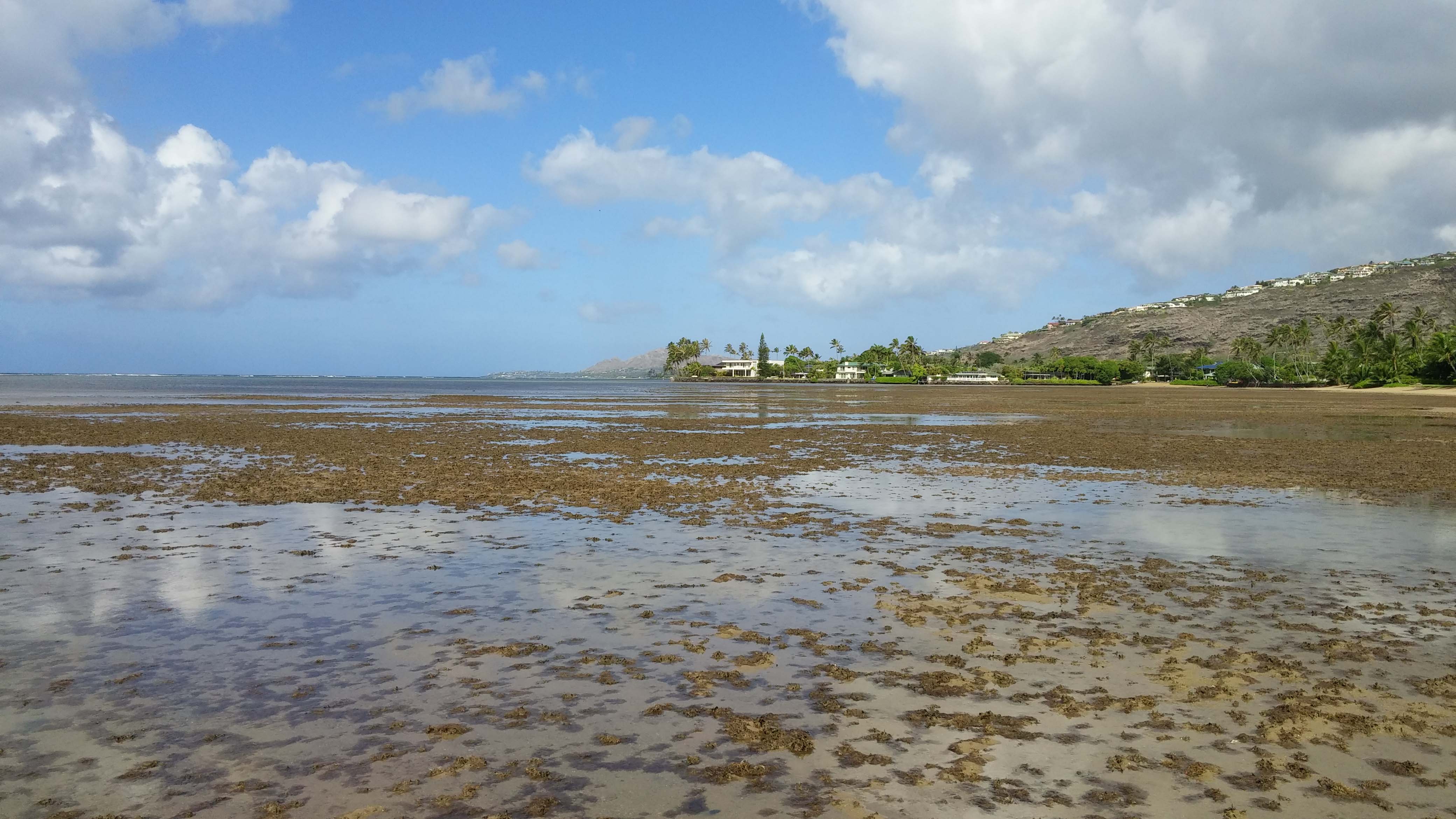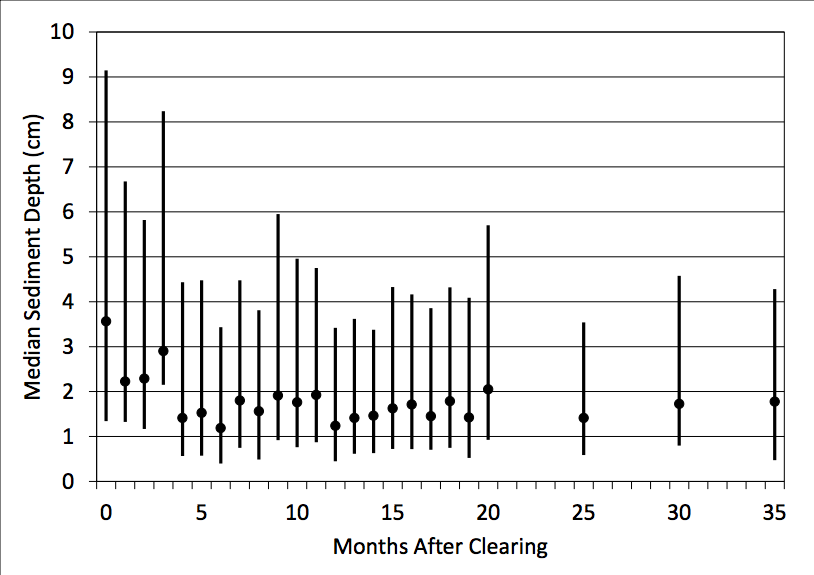The removal of the invasive specie showed positive results toward the restoration of the bay. The Great Huki produced larger improvements in the benthic cover of the reef flat.
Below shown in the first image is the mudweed within the Paiko Reef before any intervention had taken place, the second photo shows the bay clear of the mudweed after The Great Huki had taken place.

As the figure shows mudweed cover is near the 10% cover goal previously stated (>10% and <20%). With the removal of the invasive specie, the return of the native algae has also responded positively. Image by: (Kittinger et al., 2013) Native algal cover as well as species diversity have both exceeded levels noted before clearing (Minton, 2013).
Work done by Dwayne Minton from the Nature Conservancy also contributed to the measure of sediment levels within the the bay.
Data gathered from the bay shows a slight decline in the sediment depth due to the reduction in benthic cover of the invasive mudweed. The data collected has high variability within each point, ranging from as low as 1.0cm to as high as 6.0cm in variance.
The previously stated goal of aiming to return fish populations to 50% of previous level was hard to determine due to lack of information gathered by the researchers. Although work by Minton suggested that bonefish populations within the reef flat rebounded through qualitative evidence collected from interviews with local fishers. Minton also stated that recovery of the fish stocks within the reef area may be limited by poor management (no licensing, no size limits) as well as few areas are closed to fishing to rebuild stocks.
Next: Outcomes & Short-comings


